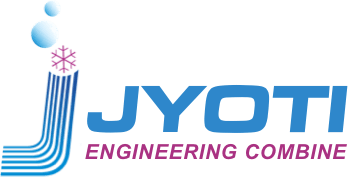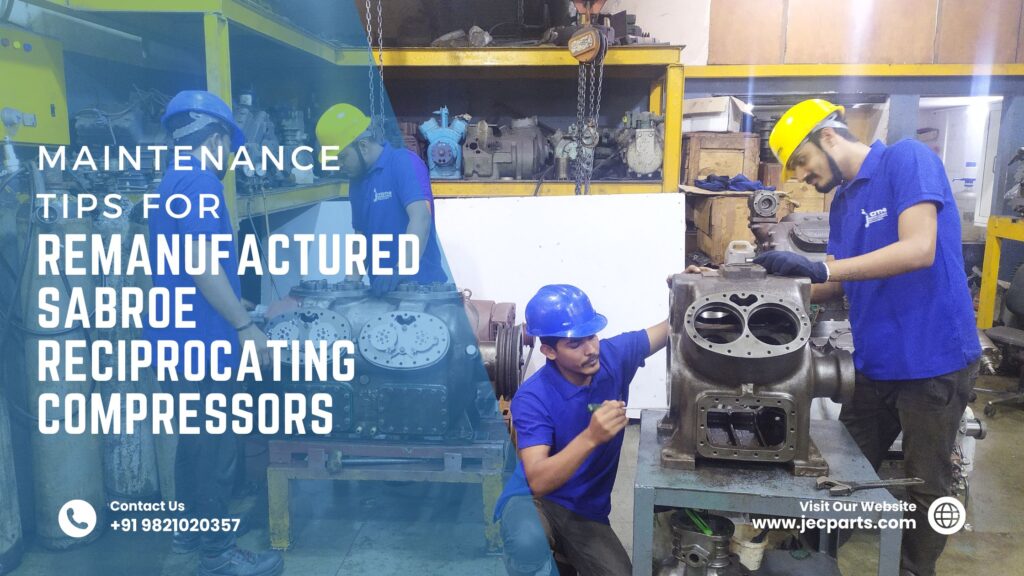Just like new compressors, remanufactured Sabroe compressors require regular maintenance to ensure optimal performance and longevity. This blog post aims to provide you with essential maintenance tips and best practices for keeping your remanufactured Sabroe compressor running smoothly. By following these guidelines, you can maximize its efficiency, minimize the risk of breakdowns, and avoid costly repairs and downtime.
Regular Cleaning: Proper cleaning is crucial to keep your remanufactured compressor operating at its best. Regularly inspect the compressor’s exterior and remove any dust, dirt, or debris that may have accumulated. Use a soft brush or a cloth to gently clean the surfaces, and be careful not to damage any sensitive parts. Additionally, consider scheduling professional cleaning at regular intervals to ensure a thorough and deep cleaning of internal components.
Air Filter Maintenance: The air filter plays a vital role in preventing dust and contaminants from entering the compressor. Depending on your operating conditions, the air filter may need to be cleaned or replaced regularly. Check the manufacturer’s guidelines for the recommended filter maintenance intervals and follow them accordingly. Regularly inspect the filter for any signs of clogging or damage, and clean or replace it as needed. A clean and well-maintained air filter ensures proper airflow and protects the compressor from potential damage.
Lubrication: Adequate lubrication is essential to reduce friction, minimize wear, and extend the lifespan of your compressor. Ensure that the lubrication system is properly functioning, and use the recommended lubricant specified by the manufacturer. Regularly check the oil level and top it up or replace it as needed. Follow the manufacturer’s guidelines for lubrication intervals, and consider implementing a regular oil analysis program to monitor the oil condition and detect any potential issues early on.
Inspection of Components: Regularly inspect all the components of your remanufactured Sabroe compressor. Look for any signs of leaks, loose connections, or abnormal vibrations. Pay close attention to critical parts such as valves, gaskets, and seals. If you notice any issues or abnormalities, address them promptly to prevent further damage. Consider implementing a comprehensive preventive maintenance program that includes detailed component inspections and testing procedures.
Scheduled Maintenance Checks: Establish a maintenance schedule and adhere to it diligently. Schedule regular inspections by trained technicians who are familiar with Sabroe compressors. They will have the expertise to identify potential problems and perform necessary adjustments or repairs before they escalate. Follow the manufacturer’s recommended maintenance intervals for tasks such as belt replacement, valve adjustments, and electrical system checks. Keeping up with scheduled maintenance checks ensures that your compressor operates at its best and reduces the risk of unexpected failures.
Documentation and Record Keeping: Maintain detailed records of all maintenance activities performed on your remanufactured Sabroe compressor. Keep track of maintenance dates, tasks performed, and any replacement parts used. This documentation will help you track the history of your compressor and identify any recurring issues. It also serves as a valuable resource for future reference and aids in troubleshooting.
Professional Assistance: If you encounter any complex issues or require extensive repairs, it’s advisable to seek professional assistance. Qualified technicians with expertise in Sabroe compressors can diagnose problems accurately and provide appropriate solutions. They can also offer valuable insights and recommendations for optimizing your compressor’s performance. Don’t hesitate to contact a reputable service provider for assistance when needed.
Cooling System Maintenance: If your remanufactured Sabroe compressor has a cooling system, make sure to inspect and clean the condenser and evaporator coils regularly. Dust and debris accumulation can hinder the heat transfer process, leading to reduced cooling efficiency. Use compressed air or a soft brush to remove any dirt or obstructions from the coils.
Electrical System Checks: Regularly inspect the electrical connections, wiring, and control panels of your compressor. Look for any signs of wear, loose connections, or corrosion. Ensure that all electrical components are in good working condition. If you notice any issues, consult a qualified electrician or compressor technician for proper diagnosis and repair.
Remember, proper maintenance is not just about addressing issues when they arise but also about preventive measures to minimize the risk of problems occurring in the first place. Regular maintenance checks, cleaning, lubrication, and component inspections should be part of your compressor maintenance plan. Don’t overlook the importance of professional assistance and documentation to ensure thorough and effective maintenance practices.
By following these maintenance tips and dedicating attention to your remanufactured Sabroe compressor, you can optimize its performance, extend its lifespan, and maximize your return on investment. A well-maintained compressor will operate efficiently, minimize downtime, and provide reliable compressed air for your industrial processes.
What sets JEC apart is its commitment to excellence, as evidenced by its accreditation from esteemed organizations such as ICRA, ISO 9001:2015, and UGAC.
To inquire further about their exceptional remanufactured Sabroe compressors, reaching out to JEC is quick and easy. You can simply dial +91 98210 20375 or +91 22 675 86605/06/07 to speak with their knowledgeable representatives. Alternatively, if you prefer written communication, you can send an email to [email protected] or [email protected]. JEC’s prompt and responsive team will be more than happy to assist you with any inquiries or orders you may have.


